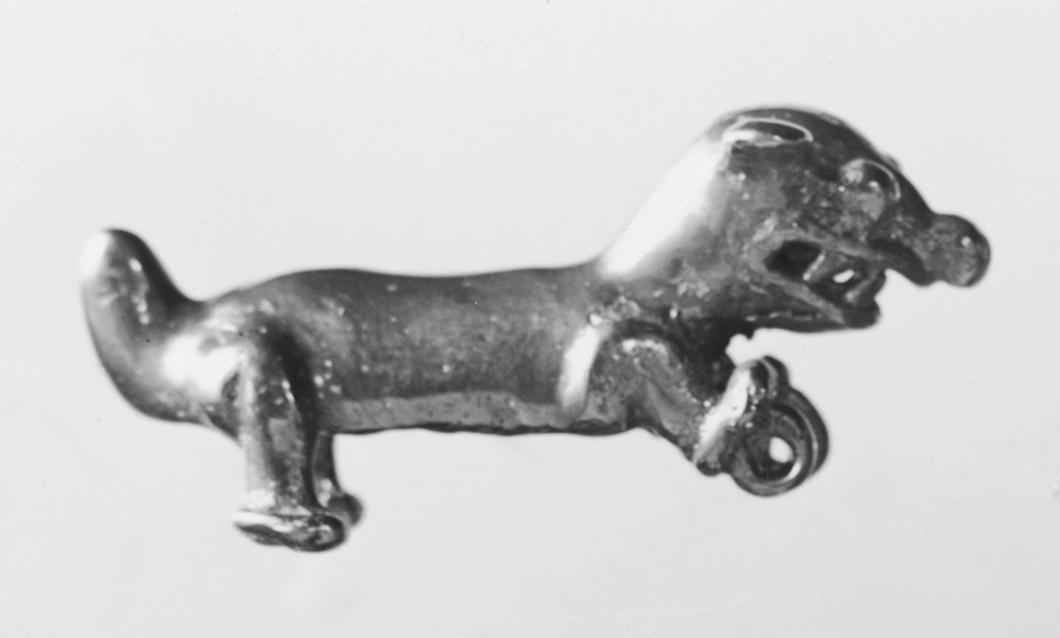Crocodile Pendant
(Ancient Americas )
Pendants were worn by men around the neck on ceremonial occasions. Columbus noted that the inhabitants of Panama who came to greet him wore gold pendants. This piece could have been created in Columbus's time or during the previous 600 years.
The animals represented are often fierce ones with which a warrior would have wanted to associate. Two animals are frequently combined, creating a mythic creature with composite attributes. This crocodile-like pendant has either a double-tongue, or more likely a double-headed snake in its mouth. The tail is divided in two parts. The heads of the snake, as well as the claws of the feet are formed of spiral-like attachments. The loops for suspension are under the forefeet.
Provenance
Provenance (from the French provenir, 'to come from/forth') is the chronology of the ownership, custody, or location of a historical object. Learn more about provenance at the Walters.
Henry Walters, Baltimore, 1911 [mode of acquisition unknown]; Walters Art Museum, 1931, by bequest.
Geographies
Panama (Veraguas-Gran Chiriquí) (Place of Origin)
Measurements
2 3/8 in. (6.03 cm)
Credit Line
Acquired by Henry Walters, 1911
Location in Museum
Accession Number
In libraries, galleries, museums, and archives, an accession number is a unique identifier assigned to each object in the collection.
In libraries, galleries, museums, and archives, an accession number is a unique identifier assigned to each object in the collection.
57.302


